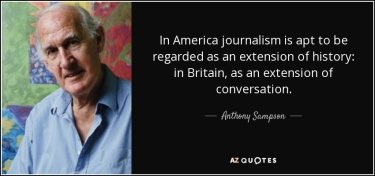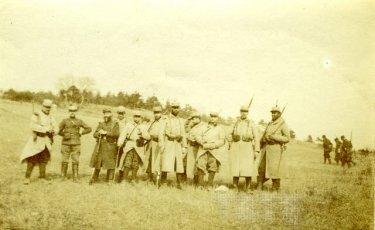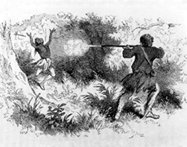Archive for April, 2024
06 Apr 2024


In the Spectator, Yascha Mounk notes some major differences in educational standards and contemplates how much these must produce national differences in both journalism and political leadership.
When I first started teaching undergraduates at Harvard, the grading system the university employed struck me as very odd. Even ambitious students at top colleges in the United States see it as their job to answer any essay question in the most thorough and reasonable way. They regurgitate the dominant view in scholarly literature in a competent manner. If they pull this off without making major errors, they fully expect to get an A. And with grade inflation rampant in the Ivy League, they usually do.
This attitude has had a significant influence on American public life. If you read an opinion piece in the New York Times or the Washington Post, its basic thesis is often utterly unsurprising. But writers will usually argue in support of their uninspired conclusion in a painstakingly logical manner, building their case by placing one square block atop the other. In American journalism, to be right — or, at any rate, to argue for the position that the right people consider to be reasonable at the time — is much more important than to be brilliant or entertaining.
This stands in stark contrast to the grading scheme — and the implicit value system — I learned as an undergraduate at Cambridge. There, my teachers explained to me that the earnest and methodical essays I initially submitted as an overseas student fresh off the boat (or, rather, fresh off the Ryanair flight) from Germany would, at best, qualify for a high 2:1. To contend for a first, I needed to learn to be ‘brilliant’. … Read the rest of this entry »
05 Apr 2024


Henri Gaudier-Brzeska (1891-1915) standing in the midst of fellow soldiers 1915.
I wanted to quote the Ezra Pound poem, and then I found a particularly splendid framing for the poem by Wen Stephenson in the January 2005 issue of the Atlantic, so fine that I feel obliged to include it, as well.
“E has sent me the Chinese poems,” wrote a young French-born sculptor named Henri Gaudier-Brzeska, who was serving as an officer on the Western Front, to his London patron Olivia Shakespear on April 11, 1915. “I keep the book in my pocket, indeed I use them to put courage in my fellows. I speak now of the ‘Bowmen’ and the ‘North Gate,’ which are so appropriate to our case.”
[S]omething triggered a memory of Gaudier-Brzeska at the front and the little book he kept in his pocket.
That book, Cathay, published in London in April 1915, was a curious pamphlet containing eleven “Chinese” poems by Ezra Pound. It came in a drab tan wrapper—a reference, perhaps, to the uniforms then being worn, and shredded, in Belgium and France.
At the front of the volume appeared this puzzling inscription:
For the most part from the Chinese of Rihaku, from the notes of the late Ernest Fenollosa, and the decipherings of the professors Mori and Ariga.
Some explanation, some deciphering, is required. Rihaku is the Japanese form of Li Po, the great T’ang Dynasty poet who lived from 701 to 762. Ernest Fenollosa (1853-1908) was an American scholar of Far Eastern literature whose voluminous notes on classical Chinese poetry—compiled in Tokyo in 1896-99 and containing the Chinese characters accompanied by rough English translations of the poems—had been entrusted to Pound by Fenollosa’s widow in 1912. The professors Mori and Ariga were the Japanese scholars who served as Fenollosa’s translators and interpreters of the Chinese texts. Fenollosa, you see, couldn’t read Chinese. Neither could Pound.
There is much more to be said, about the text of Cathay itself and about Pound’s theory of “Imagisme” and his understanding, erroneous as it may have been, of the Chinese written character or “ideogram.” (For further decipherings, Richard Sieburth’s notes on Cathay in the Library of America’s recently published Ezra Pound: Poems and Translations are highly recommended, as is the chapter entitled “The Invention of China” in Hugh Kenner’s 1971 study The Pound Era.) T. S. Eliot famously called Pound “the inventor of Chinese poetry for our time.” But what Pound invented here had little to do with Chinese and everything to do with his time, our time—maybe all times.
So it was that somewhere in the trenches near the Marne in the early spring of 1915, the twenty-three-year-old Henri Gaudier -Brzeska read to his troops the following poem from Cathay, the one referred to in his letter as the “North Gate.” It’s a text, it has to be said, that is not so much translated—Pound’s Chinese “translations” are notoriously inaccurate, though accuracy as such was hardly the point—as derived, paraphrased, transmuted from the eighth-century source (by way of professors Fenollosa, Mori, and Ariga) into a new and startlingly powerful, startlingly alive, English poem.
To Gaudier-Brzeska in the trenches—despite the layers of history, geography, and language, of cultural and aesthetic mediation, separating him from the original Chinese—the poem, by some uncanny process, rang as true, as immediate, as any news bulletin. If literature is “news that stays news,” as Pound would later write, then here is a war poem appropriate to the ages.
Lament of the Frontier Guard
By the North Gate, the wind blows full of sand,
Lonely from the beginning of time until now!
Trees fall, the grass goes yellow with autumn.
I climb the towers and towers
to watch out the barbarous land:
Desolate castle, the sky, the wide desert.
There is no wall left to this village.
Bones white with a thousand frosts,
High heaps, covered with trees and grass;
Who brought this to pass?
Who has brought the flaming imperial anger?
Who has brought the army with drums and with kettle-drums?
Barbarous kings.
A gracious spring, turned to blood-ravenous autumn,
A turmoil of wars-men, spread over the middle kingdom,
Three hundred and sixty thousand,
And sorrow, sorrow like rain.
Sorrow to go, and sorrow, sorrow returning,
Desolate, desolate fields,
And no children of warfare upon them,
No longer the men for offence and defence.
Ah, how shall you know the dreary sorrow at the North Gate,
With Rihoku’s* name forgotten,
And we guardsmen fed to the tigers.
By Rihaku
[*Rihoku, not to be confused with Rihaku [Li Po], is the Japanese for Li Mu, a Chinese general who defended China against the Tartars and died in 223 B.C.E. (Richard Sieburth, Ezra Pound: Poems and Translations, Library of America, 2003).]
In his last letter to Mrs. Shakespear, on May 29, Gaudier-Brzeska wrote: “Today is magnificent, a fresh wind, clear sun and larks singing cheerfully. The shells do not disturb the songsters…. They solemnly proclaim man’s foolery and sacrilege of nature. I respect their disdain….”
He would be killed on June 5, 1915, in a charge at Neuville St. Vaast.
—————————–
Li Po aka Li Bai Wikipedia entry.
04 Apr 2024


Christopher Rufo, at City Journal, interviews an anonymous Boeing executive, who explains what went wrong at one of America’s greatest companies.
So, right now, we have an executive council running the company that is all outsiders. The current CEO is a General Electric guy, as is the CFO whom he brought in. And we have a completely new HR leader, with no background at Boeing. The head of our commercial-airplanes unit in Seattle, who was fired last week, was one of the last engineers in the executive council.
The headquarters in Arlington is empty. Nobody lives there. It is an empty executive suite. The CEO lives in New Hampshire. The CFO lives in Connecticut. The head of HR lives in Orlando. We just instituted a policy that everyone has to come into work five days a week—except the executive council, which can use the private jets to travel to meetings. And that is the story: it is a company that is under caretakers. It is not under owners. And it is not under people who love airplanes. …
tatus games rule every boardroom in the country. The DEI narrative is a very real thing, and, at Boeing, DEI got tied to the status game. It is the thing you embrace if you want to get ahead. It became a means to power.
DEI is the drop you put in the bucket, and the whole bucket changes. It is anti-excellence, because it is ill-defined, but it became part of the culture and was tied to compensation. Every HR email is: “Inclusion makes us better.” This kind of politicization of HR is a real problem in all companies.
If you look at the bumper stickers at the factories in Renton or Everett, it’s a lot of conservative people who like building things—and conservative people do not like politics at work. …
Boeing is just a symptom of a much bigger problem: the failure of our elites. The purpose of the company is now “broad stakeholder value,” including DEI and ESG. This was then embraced as a means to power, which further separated the workforce from the company. And it is ripping our society apart.
Boeing is the most visible example because every problem—like, say, a bolt that falls off—gets amplified. But this is happening everywhere around us, and it is going to have a huge effect. DEI and ESG became a way to stop talking honestly to employees.
We need to tear off the veil of all this coded language that is being used everywhere, and our elites need to recover some sense of service to people. They think they have it already because they are reciting these shibboleths of moral virtue: “I am serving because I am repeating what everyone else is saying about DEI.” It’s a form of cheap self-love that is being embraced by leaders. If you pay the tax to the DEI gods or the ESG gods and use coded language with your workforce, it absolves you of the hard work of really leading.
No. Service means you are spending the extra time to understand what’s really happening in the factory and in your supply chain. There should be some honor in understanding that we inherited something beautiful and good and worth loving.
RTWT
03 Apr 2024


It is the gold ring of Titus Carvilius Gemello.
The jewel was found on the finger of a Roman matron, the noblewoman Aebutia Quarta, in a Flavian-Trajanic tomb, now known as the ‘Hypogeum of the Garland’.
The tomb was discovered only in 2000 in the necropolis of Grottaferrata, near Rome.
According to Prometeo Magazine, the underground chapel contained two marble sarcophagi of excellent workmanship, decorated in relief and inscribed with the names of the two deceased: Carvilio Gemello and Aebutia Quarta.
When they opened the sarcophagi, the archaeologists were in for a huge surprise – the bodies were still intact.
The embalming they had been subjected to had allowed them to be in such an extraordinary state of preservation that Carvilio’s remains became known as the ‘Mummy of Rome’.
Carvilio’s body was wrapped in a shroud and completely covered with flowers.
Large, well-maintained garlands covered the upper half of the body, one of which was placed around the head. One of his femures was found fractured in two places.
In addition, a high percentage of arsenic was found in the hair, which means both septicemias caused by an injury or a fall from a horse and poisoning were hypothesized as the circumstances of his death.
Carvilio had died quite young, at the age of only 18. His mother, Aebutia, followed him a few years later, at the age of 40-45.
Aebutia’s body was barely perceptible, as it was covered with a plant mantle made up of hundreds of tiny garlands.
A well-preserved wig was placed on her head, wrapped in a net woven with fine gold double thread, and finished with a braid.
On the woman’s finger was a gold ring, with a bezel of rock crystal worked in cabochon, through the convex upper surface of which was seen the bust of a male figure finely executed on a sheet of micro-relief.
This creates a holographic image that fascinates the viewer, especially given the age of the jewel. The luminous effect of the crystal lens lends a mysterious depth to the image of the deceased.
Following the loss of her beloved son, Aebutia commissioned the precious gold ring to keep his memory alive.
The ring is currently on display at the Museo Archeologica Nazionale di Palestrina.
03 Apr 2024


Country Life pays tribute to one of everyone’s favorite breeds of dog: the high-spirited (frequently much too high-spirited) Jack russell.
As legend has it, Oxford undergraduate John Russell was strolling dreamily in the meadows of Magdalen College — ‘Horace [poet] in hand, but Beckford [sporting diarist] in head’ — when he came upon an appealing rough-coated terrier bitch called Trump, with a ‘dot, no larger than a penny piece’ on her tail. The Revd E. W. L. Davies, who became Russell’s curate and biographer, wrote that his hunting-mad subject ‘halted as Actaeon might have done when he caught sight of Diana disporting in her bath; but unlike that ill-fated hunter, he never budged… til he had won the prize and secured it for his own’.
Tan-and-white Trump became the foundation bitch for generations of what would become known as the Parson Russell terrier, predominantly white with a few patches of colour, long-legged enough to keep up with hounds, but compact enough to fit down a fox’s earth. And the original retained her fame: Edward Vll commissioned a painting of Trump, which hangs at Sandringham in Norfolk.
RTWT
/div>

Feeds
|









